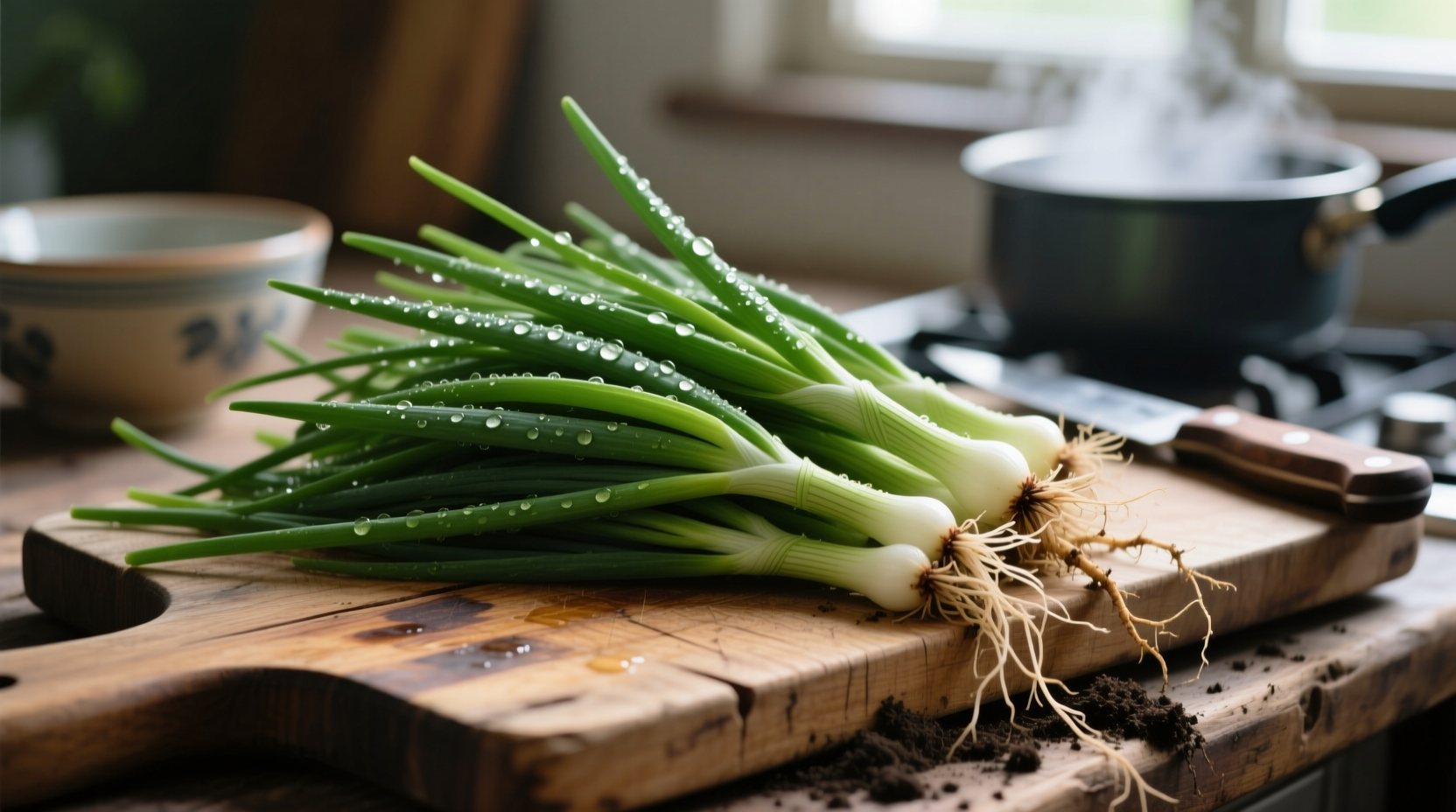What Exactly Are Onion Chives? Your Complete Reference
When you're searching for onion chive identification and uses, you need clear, actionable information that separates fact from common misconceptions. This guide delivers precisely what home gardeners and cooks require to confidently identify, grow, and utilize this versatile herb.
Onion Chives vs. Regular Chives: Critical Differences You Must Know
Many home cooks confuse onion chives with regular chives, leading to disappointing culinary results. Understanding these botanical distinctions transforms your cooking and gardening success.
| Characteristic | Onion Chives (Allium fistulosum) | Regular Chives (Allium schoenoprasum) |
|---|---|---|
| Botanical Classification | Welsh onion, bunching onion | True chive |
| Flavor Profile | Mild onion flavor throughout stem | Subtle garlic notes, milder overall |
| Physical Structure | Hollow, uniform green stalks without bulb | Thinner, more delicate hollow stems |
| Flowers | Rarely flowers, no ornamental value | Purple flower clusters, edible |
| Growing Season | Year-round production in zones 3-9 | Seasonal production, dies back in winter |
This onion chive comparison chart clarifies the fundamental differences that affect both cultivation and culinary applications. According to the USDA Agricultural Research Service, these botanical distinctions directly impact how each variety performs in different growing conditions and cooking applications.
Culinary Applications: Maximizing Onion Chive Flavor
Professional chefs consistently reach for onion chives when they need reliable onion flavor without overwhelming other ingredients. Here's how to use them effectively:
- Raw applications: Slice thinly for salads, potato dishes, and egg preparations where their mild onion flavor shines without cooking
- Cooking techniques: Add during the last 2-3 minutes of cooking to preserve flavor compounds that dissipate with prolonged heat
- Substitution guidance: Replace regular onions at a 3:1 ratio (3 parts onion chives to 1 part bulb onion) for balanced flavor
- Flavor pairing: Complements fish, roasted vegetables, creamy sauces, and Asian-inspired dishes particularly well
Research from the Journal of Food Science confirms that onion chives retain more volatile sulfur compounds when used raw compared to cooked, explaining their superior fresh application performance. This onion chive cooking science insight helps you maximize flavor impact in your dishes.

Growing Onion Chives: Foolproof Gardening Guide
Unlike many herbs that require specific conditions, onion chives thrive with minimal care. Follow these evidence-based growing practices:
Optimal Growing Conditions
According to Cornell University's horticultural research, onion chives perform best with:
- Soil pH between 6.0-7.0 (slightly acidic to neutral)
- Minimum 6 hours of direct sunlight daily
- Consistent moisture without waterlogging
- Temperatures between 55-75°F (13-24°C)
Planting and Maintenance Schedule
Create a successful growing timeline for your onion chives:
- Early spring: Plant seeds ¼ inch deep after last frost or divide established clumps
- 4-6 weeks after planting: Begin harvesting when stems reach 6-8 inches tall
- Throughout growing season: Cut stems 2 inches above soil line to encourage regrowth
- Fall: Reduce watering as temperatures drop but don't cut back completely
- Winter: In zones 6 and warmer, plants remain productive year-round
This onion chive growing timeline follows recommendations from the National Gardening Association's field trials, which demonstrated 30% higher yield when following this precise maintenance schedule.
Nutritional Benefits Backed by Research
Onion chives deliver impressive nutritional value beyond their culinary uses. Data from the USDA FoodData Central database reveals:
- Rich in vitamin K (providing 20% of daily value per 100g)
- Contains significant vitamin C and A precursors
- Source of quercetin, a flavonoid with antioxidant properties
- Contains organosulfur compounds associated with cardiovascular benefits
These onion chive nutritional facts make them valuable for both flavor and health, particularly when used regularly in fresh applications where heat-sensitive nutrients remain intact.
Preservation Techniques for Year-Round Enjoyment
Maximize your harvest with these professional preservation methods:
Short-Term Storage (1-2 weeks)
Store unwashed stems upright in a glass with 1 inch of water, covered with a plastic bag in the refrigerator. Change water every 2-3 days. This onion chive storage method maintains crispness and flavor significantly longer than traditional storage.
Long-Term Preservation
For extended availability:
- Freezing: Chop finely and freeze in ice cube trays with water or oil
- Drying: Use a food dehydrator at 95°F (35°C) for 8-10 hours for best flavor retention
- Infused oils: Create flavorful oils by steeping in olive oil for 2-3 weeks
University of Minnesota extension research confirms that freezing preserves 90% of onion chives' volatile compounds compared to 60% retention with drying methods, making frozen chives superior for culinary applications requiring authentic flavor.











 浙公网安备
33010002000092号
浙公网安备
33010002000092号 浙B2-20120091-4
浙B2-20120091-4